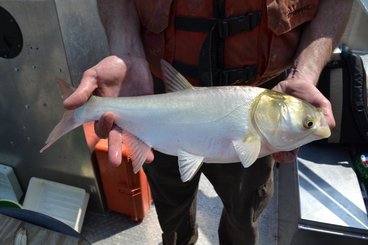
Area invasive carp project receives funding
University of Minnesota researchers have secured funding to install underwater speakers on Lock and Dam No. 8 near Genoa, Wis., for a multi-year experiment to combat the spread of invasive carp in the upper Mississippi River.
Thanks to a combination of private donations and existing state funds re-purposed by the Legislative-Citizen Commission on Minnesota Resources, the Minnesota Aquatic Invasive Species Research Center now has $75,000 in place to install five transducers that will emit sound frequencies known to repel invasive carp.
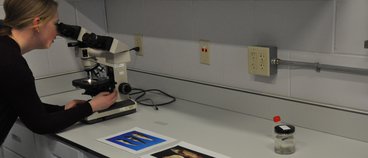
Aquatic invasive species center gets new director
As Asian carp move closer into state waters, the Minnesota Aquatic Invasive Species Research Center is racing to find ways to stop them.
With the push to increase research efforts to keep the invasive fish at bay, the center’s founder, Peter Sorensen, was moved from his post as director to become a full-time researcher earlier this month.
The position change came a day after the center, which is located on the University of Minnesota’s St. Paul campus, received funding for an upcoming project to create Asian carp barriers along the Iowa border.
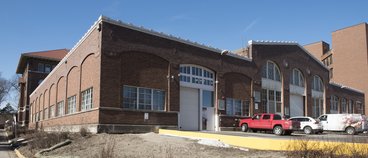
Final bonding bill covers most University construction efforts
After months of lobbying and state legislators hashing out budget proposals, this year’s legislative session ended with parts of the University of Minnesota’s bonding request unfulfilled.
On May 16, the state Legislature approved $119.4 million to help fund two University construction projects, while three others received partial funding. Although the finalized bonding bill cuts the University’s request short, school officials and faculty members are pleased with the amounts approved.
The University asked for $233 million for construction and renovation projects across the five-campus system, while making funding for Higher Education Asset Preservation and Replacement one of its top priorities. State legislators allocated $42.5 million of the $100 million requested for HEAPR, a general improvement fund.
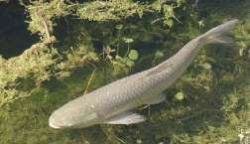
Upper St. Anthony Falls Lock Closed To Stop Invasive Carp
Local political leaders have decided to close the Upper St. Anthony Falls Lock to try to stop the spread of invasive carp.
We’ve been waging war against the invasive Silver and Big Head carp ever since they escaped captivity in the southern United States and began spreading into the wild. Decades later, the fish are migrating further northward, disrupting nature’s delicate aquatic balance.
“They are filter feeders and they eat just about everything, so they collapse the food chain,” Dr. Peter Sorensen, a fisheries biologist, said.
Sorensen heads the University of Minnesota Aquatic Invasive Species laboratory where research is being done on a number of control measures, including bubble barriers and underwater acoustic barriers.

It's Carp Wars as Minnesota takes on Asian carp
It was a bad week for Asian carp. Which is good for the rest of us.
Last Tuesday, the Minnesota congressional delegation announced that a provision in a federal water resources bill that is expected to become law provides for the closure within one year of the Upper St. Anthony Lock in Minneapolis.
The intent is to develop an absolute barrier that prevents bighead, silver, grass and other invasive carp from swimming upstream of that point, thereby threatening the state’s northern rivers and lakes.
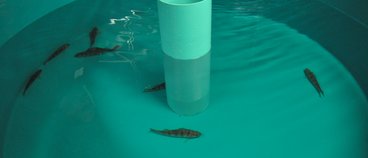
Invasive carp project funded as UMN changes directors
Minnesota's carp-fighting point man has been busy lately.
In the past few weeks, University of Minnesota professor Peter Sorensen has plotted a plan to stymie invasive carp advancing up the Mississippi River, lobbied state lawmakers for millions of dollars to fund the university's Aquatic Invasive Species Research Center that he founded -- and been removed as director of the center.
The U said the decision to replace Sorensen was intended to allow him to focus on research and was not disciplinary. He remains a tenured professor and a key researcher at the center, but he loses a 10 percent salary bump customary with U directorship duties.

UMN professors say they need $6M to continue important work
Critical research on Minnesota's aquatic pests and food supply is being conducted in a century-old tractor garage and a condemned workshop on the University of Minnesota's St. Paul campus.
The school's bee laboratory is lodged in a small, unfinished cinder block structure tucked away on a muddy road on the northwest edge of the campus.

Dated lab calls for renewal
The building housing the University of Minnesota’s Minnesota Aquatic Invasive Species Research Center was originally built in 1911 as a farmhouse equipment repair shop.
In the 1990s, it was renovated to study aquaculture and genetically modified fish. And now, some say it’s in desperate need of another upgrade.
The water filtration system is falling apart, the thermostat needles no longer work, the water supply system is unreliable and there are no backup alarms to monitor animal life support, said Becca Nash, associate director of the MAISRC.

Asian carp expert says the invaders can be beaten
I won't say that optimism was his theme, exactly, and certainly there was no suggestion that Minnesota relax any of its efforts to keep Asian carp from colonizing its waterways.
But the overall picture that Duane Chapman laid out in his talk in St. Paul Tuesday night, on the subject of "Biology and Management of Asian Carps: Lessons for Minnesota," was certainly more nuanced, way more interesting and markedly less dismal than the usual disaster scenarios we hear.
This matters because Chapman, a fisheries expert who works for the U.S. Geological Survey's Environmental Research Center in Columbia, Mo., may know more about these fish than any other single human being. (He is on furlough from USGS nowadays because of the shutdown, but kept his speaking engagement as a private citizen.)

University of Minnesota pushes science in facilities request
As University of Minnesota officials gear up to ask the Legislature for $233 million in funding to renovate and construct buildings, they’re driving home one theme:
It’s all about STEM — Science, Technology, Engineering and Math.
University government relations adviser Jason Rohloff told reporters during a campus facilities tour today that all but one of the major renovation and construction projects are connected to those fields.
